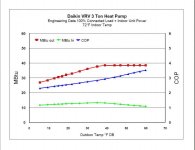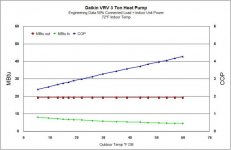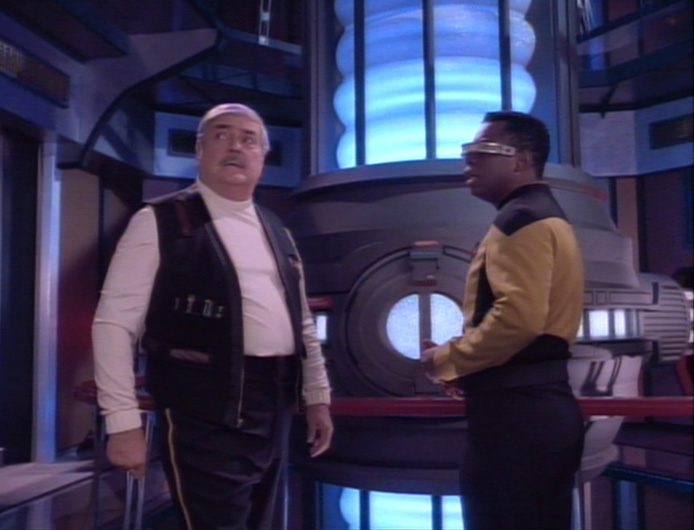-
There were many reasons for the change of the site software, the biggest was security. The age of the old software also meant no server updates for certain programs. There are many benefits to the new software, one of the biggest is the mobile functionality. Ill fix up some stuff in the coming days, we'll also try to get some of the old addons back or the data imported back into the site like the garage. To create a thread or to reply with a post is basically the same as it was in the prior software. The default style of the site is light colored, but i temporarily added a darker colored style, to change you can find a link at the bottom of the site.
You are using an out of date browser. It may not display this or other websites correctly.
You should upgrade or use an alternative browser.
You should upgrade or use an alternative browser.
Garage heat options
- Thread starter Mazo EMS2
- Start date
Navvet
New member
I went with the high tech option .....
I just added Mr Cool DIY Ductless Mini-Split Heat Pump (w/ WiFi) in both my wife's 600 sq ft workshop and my 850 sq ft garage. 12K (1 ton) for her shop and 18K (1.5 ton) for mine.
These are great !!! Pre-charged linesets, just hook everything together, run power and turn them on. Set the temp on the thermostat and it stays there .... Plus you can't hear them running !!!
A small hole (4") is required in the wall for the lineset and the outside unit is small enough I mounted them on the wall.
I got mine from here and was able to get both units delivered for less than $2,000.
http://ingramswaterandair.com/mrcool-mrcool-series-c-45_124_4659_4661.html
(Admin - If posting this web address is a no-no, please delete the address. Tks)
I just added Mr Cool DIY Ductless Mini-Split Heat Pump (w/ WiFi) in both my wife's 600 sq ft workshop and my 850 sq ft garage. 12K (1 ton) for her shop and 18K (1.5 ton) for mine.
These are great !!! Pre-charged linesets, just hook everything together, run power and turn them on. Set the temp on the thermostat and it stays there .... Plus you can't hear them running !!!
A small hole (4") is required in the wall for the lineset and the outside unit is small enough I mounted them on the wall.
I got mine from here and was able to get both units delivered for less than $2,000.
http://ingramswaterandair.com/mrcool-mrcool-series-c-45_124_4659_4661.html
(Admin - If posting this web address is a no-no, please delete the address. Tks)
jcthorne
Well-known member
Great options if you have natural gas or (cheap) propane available. NG doesn't exist here, and getting a permit for either an above ground or buried tank is absolutely insane. Then, the price of the tank - typically 500 lbs which is a big tank and lots of $$, plus excavation if it gets buried, then the ongoing price of propane here, which is not cheap. For me, the only option just doesn't work, although I wish it would.
IfNG
If NG is not available to you, consider a high efficiency mini split heat pump. They work well down to about zero deg F these days. FAR cheaper to run than straight electric resistance heat.
wyliec
Active member
IfNG
If NG is not available to you, consider a high efficiency mini split heat pump. They work well down to about zero deg F these days. FAR cheaper to run than straight electric resistance heat.
If you go that route, the ductless split heat pump would be a choice.
IdahoMtnSpyder
Well-known member
Not always. I have a Daikin system in my house with one unit in the garage. I seldom use the garage unit because it's only 9000 Btuh capacity and the heat pump is 36,000 Btuh. At low temperatures, like 0 to 15°F, if the garage unit only is running, which would be case most of the time I need it, the Coefficient of Performance of the heat pump drops down to close to 1 which is basically the same as straight electric resistance.IfNG
If NG is not available to you, consider a high efficiency mini split heat pump. They work well down to about zero deg F these days. FAR cheaper to run than straight electric resistance heat.
For dedicated system where a single indoor unit with the same rating as the heat pump is used, like a single system for the garage, the efficiency will be better.
Rogue Hawk
Active member
JimVonBaden
New member
I'm installing a Mini-Split system. Heat and cool in one unit, 110 volt, though 220V is better, and they come in a kit ready to install. It even comes charged. You can get an HVAC tech to do the vacuum for under $100, and have a system for under $800 that works great! Bare in mind that my garage is only 400 sq ft.In one of our houses in Michigan we had heat in the garage. It worked so well that my step daughter, who didn't get a parking spot in the garage, would pull her car in, turn up the thermostat and let the snow melt. :banghead: The heater was there when we bought the house and I don't remember what it was exactly. Natural gas for sure though. Update: The boss said it was a wall mounted ventless unit.
I wish it was as easy to cool our garage as it was to heat that one.
JimVonBaden
New member
Awesome units, very popular in Europe and easy to install. Mine will require a 2-3" round hole in the wall for the lines and electrical.:thumbup:The single unit mini splits are available up to 36,000 BTU now. Even precharged DIY units.
subdude17349
New member
I replaced my ventless gas wall heater and electric resistance heater with a mini-split. Works great.
Biggest issue with the natural gas blue flame heater was the moisture that it put in the air. Turn it on and 20 minutes later every single metal item in the garage was covered in condensation. Great for making things rust.....:banghead:
Biggest issue with the natural gas blue flame heater was the moisture that it put in the air. Turn it on and 20 minutes later every single metal item in the garage was covered in condensation. Great for making things rust.....:banghead:
jcthorne
Well-known member
For dedicated system where a single indoor unit with the same rating as the heat pump is used, like a single system for the garage, the efficiency will be better.
I have no idea what you are trying to say here. But a heat pump is ALWAYS more efficient that straight electric. As the temp drops it can approach the same but will always be slightly above 1.0 The point at which it approaches 1.0 is part of the evaporator (outside unit) design. Some work well down to 20 below.
The DIY and mainstream inverter driven minisplits generally work well down to about zero.
IdahoMtnSpyder
Well-known member
If NG is not available to you, consider a high efficiency mini split heat pump. They work well down to about zero deg F these days. FAR cheaper to run than straight electric resistance heat.
Not always. I have a Daikin system in my house with one unit in the garage. I seldom use the garage unit because it's only 9000 Btuh capacity and the heat pump is 36,000 Btuh. At low temperatures, like 0 to 15°F, if the garage unit only is running, which would be case most of the time I need it, the Coefficient of Performance of the heat pump drops down to close to 1 which is basically the same as straight electric resistance.
For dedicated system where a single indoor unit with the same rating as the heat pump is used, like a single system for the garage, the efficiency will be better.
OK, let me try to clear up what I'm driving at. In the first quote above you said the mini-split is FAR cheaper to run than resistance heating. I am saying that is not always the case. The Daikin system, and others, have the option of multiple indoor units, all which can run individually. In my case I have a 36k Btuh heat pump connected to a 36 Btuh indoor unit in the house and a 9k Btuh unit in the garage. Each unit runs independently of the other. If I am running the garage unit, it would usually be the only unit running as I would be out there during the day. The garage is not heated full time, and the house unit runs almost exclusively at night. In that scenario I have a 36k Btuh heat pump connected to a 9k Btuh condenser/air handler. The heat pump will throttle back so it's output matches the load, but, and here's the kicker, the energy to run it does not drop proportionally. As a result the energy input into both the heat pump and indoor air handler are close to 9k Btuh, just barely under the output of the air handler. In this case the efficiency of the system, although better than 1, is not FAR better than straight resistance heating.I have no idea what you are trying to say here. But a heat pump is ALWAYS more efficient that straight electric. As the temp drops it can approach the same but will always be slightly above 1.0 The point at which it approaches 1.0 is part of the evaporator (outside unit) design. Some work well down to 20 below.
The DIY and mainstream inverter driven minisplits generally work well down to about zero.
Below are two charts derived from the published engineering data for my Daikin heat pump. The first is for a 100% connected load. In that one you can see exactly what you are saying about the efficiency being far better, even at outdoor temps down to 5°F. The second chart is for 50% connected load. As you can see as the outdoor temp drops down to 5°F the energy in is 8.0k Btuh compared to 11.7k Btuh for 100% load. These are the actual numbers from my spreadsheet. That shows the input energy only drop about 30% for a 50% drop in output energy. Daikin does not publish data for 25% connected load. Extrapolating to a 25% connected load I estimate the input energy would probably be around 6.5 to 7k Btuh. So at 5°F for a 9k Btuh output (75% less than full load) the energy input is only about 40% less yielding a COP of 1.33. In my case 9k Btuh is quite slow to raise the garage from 55°F to 70°F. Coupling the low efficiency and the long warm up time I opted to use a pellet stove for heating the garage. Had I studied the engineering data closely before I built my house and installed the heat pump I would either have put in a much larger indoor unit in the garage, or not one at all. Time of day metering is also another reason I seldom run my garage unit. Power rates are almost double during the daytime compared to night time.
That's why I say if the indoor unit and heat pump are of equal rating then the system is very efficient, as you say it is. But, if the indoor unit is much smaller than the heat pump, which would be the norm for a multi-unit indoor system, you cannot be assured of high efficiency operation at low outdoor temps all of the time. Hope this helps you understand better my earlier comment.


I recognize this thread is about garage heating only and the single unit system is what is being recommended to the OP, but I just could not let your characterization of a mini-split system always being far more efficient go without offering an alternative view.
Last edited:
Similar threads
- Replies
- 6
- Views
- 576
- Replies
- 4
- Views
- 2K

